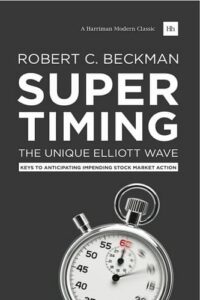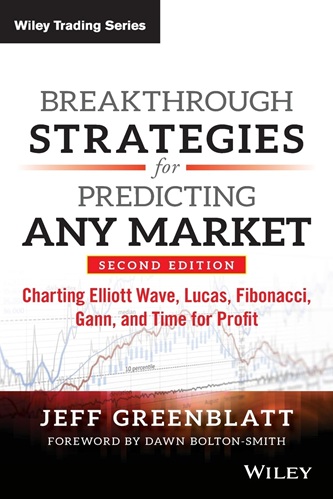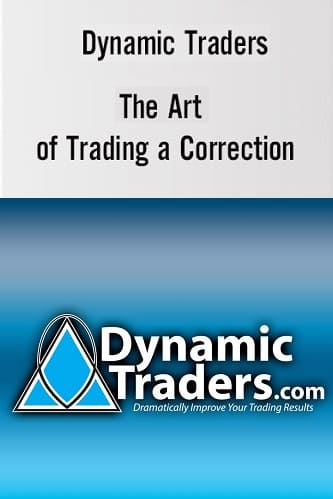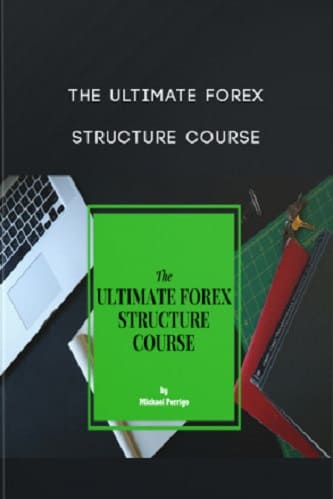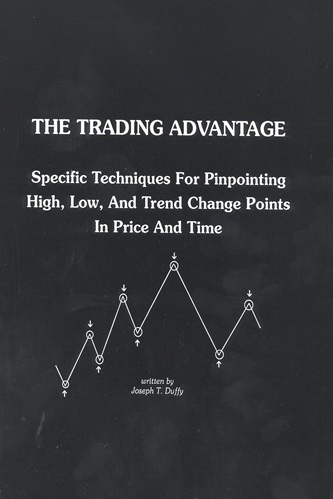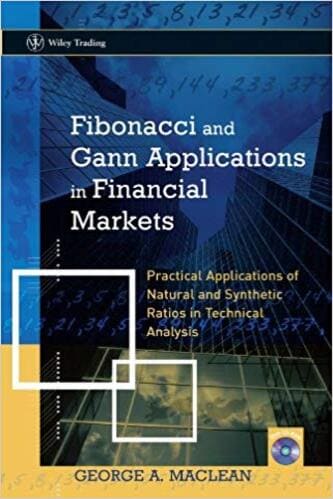Articles
More Profits with Gann, Elliott and Fibonacci By Robert Miner
In the previous article, I described in detail the Gann, Elliott and Fibonacci methods I used for an actual trade in the gold market. The methodologies described resulted in a trade that was entered within just two trading days and $10 of the major intermediate term cycle high of June second. That article was completed in mid-August when the open short position described had so far resulted in over $50 profit ($5000 per contract). The article ended with the time and price objectives the market indicated for the termination of the move.
Read Article: Taking Gann, Elliott, And Fibonacci To The Bank By Robert Miner
Let’s briefly review what those time and price objectives were in mid-August and see how it came out. The price objectives for the termination of the short trade fell at the 418-423 zone, 396-397 zone and the 384. All were based on the December,1988 gold contract. The intra-day low for that cycle fell at 395.50 on September 26, just .50 below the projection! See the article in the previous issue of the Gann and Elliott Wave for how those price projections were calculated.
There were numerous time objectives that fell in the last three weeks of August. I stated in that article that the specific date of August 25 would likely be quite important and a date to watch for a change in trend. I next stated that I would look for the week of September 19 for a change in trend. The exact date anticipated, August 25 resulted in a swing high from when the market accelerated its move, down into the final low of the cycle. That major cycle low fell on September 26, just one trading day following the projected change in trend week of September 19. Gann, Elliott and Fibonacci time, price and pattern analysis once again prepared me for significant time and price reversals in the market.

Let’s continue our analysis of the gold market and make specific time and price forecasts for the future using Gann, Elliott and Fibonacci time, price and pattern analysis. The gold price moved down strongly into late September just as anticipated. The intra-day low on September 26 was less than one dollar from my most important price objective at 396-397, a 61.8 percent retracement of the February,1985 to December,1987 rally. The market activity of the day that reached that price objective was a reversal day with a new low and a close higher than the previous day’s close. The September 26 low was a reversal day at a very important price objective, just one trading day from the week of an expected important change in trend. Time, price and pattern had once again coincided to result in a significant change in trend.
Suggested Books and Courses About Elliott Waves Method
The reversal day was not a strong enough indication to reverse to a long position from the short taken on June seventh. Because all the parameters for a major change in trend had been met, my reversal stop is placed very tight and I am looking very closely for confirmation that the trend has changed. The market consolidates in a sideways movement for six days following the September 26 low. On the seventh day, the market had a wide range outside day with a close above the high of the previous six day’s trading range. Gann teaches that the seventh period often results in a change in trend. Study of past price history of gold will confirm that there is often a change in trend in the seventh day, week or month. Always be particularly alert at seven week intervals from swing highs and lows for a change.
Since time, price and pattern had all been satisfied to indicate a major change in trend, the outside breakout day up is confirmation enough at this point that the trend has changed. My short position is reversed to long on the close of this outside day on October fifth at 410 (now basis the February contract). Profit from the short position from the June seventh 476 through the reversal on the October fifth 405 (basis December contract) realized a $71 ($7100 per contract) gain from an $89 swing. The stop on the new long position is placed at 403, one dollar below the outside day’s low.
The following day another confirmation of trend change occurs as gold gaps up. The stop is raised to 407.50, just 1.50 below the consolidation range high. Two days later the rally is further confirmed by another gap day up. The stop is raised to 409.50 or just one dollar below the first gap. The price objective for this rally swing from the September low should be a ratio from either the June 3 high or the important August 25 swing high. Retracements in the gold market usually fall at one of the major Fibonacci ratios. The minimum retracement of minor and major swings is usually a 38 percent retracement of the previous minor or major cycle. A 38 percent retracement from the August 25 high falls at 420, and a 38 percent retracement from the June high falls at 434. A corrective cycle most often unfolds in a three-wave ABC pattern. If a five-wave pattern results, the reversal is more likely a major change in trend rather that just a correction to the prior cycle.
Price makes the first rally top at 422.50, just above the first objective of 420. The strong down day of October 21 indicates that price is correcting the first swing. I am expecting at least an ABC rally which would result in at least two rally swings. The C-wave or second swing should exceed the high of the first swing or A-wave. A 50 percent correction of the initial swing from the September 26 low at 401 to the October 17 high at 422 equals 411. A 62 percent correction falls at 409. And 409 falls just below the 2 x 1 Gann angle at this point in time. Price should not close below the 2 x I angle if a longer term rally is unfolding. The stop remains at 409.50, just below the 2 x 1 angle at a 62 percent retracement of the initial swing.
Price falls to within one dollar of the 2 x 1 Gann angle and reverses to continue its rally. Remember, my minimum expectations are for an Elliott ABC correction where the next swing or C-wave will exceed the first swing or A-wave high. Once price has closed above the A-wave high the stop is advanced. Due to the wide range and high close of the break above the A-wave high on November second, the stop is moved to just below the low of November second at 419.50. I now have a fair profit of $9 or $900 per contract. Not bad, but I am looking for a longer term and more profitable move. My objective is to remain in the market to take advantage of a more significant move if it develops.
Once price moves above the A-wave high, I can calculate the price objective of the next swing. The next minimum price objective is at 434, the 38 percent retracement of the June through September down cycle followed by 444, a 50 percent retracement of that cycle. The 434 objective coincides with 433, a price where wave C would equal wave A. Price reaches the final high for the C-wave at exactly 434! This important ratio level also coincided with the 2 x 1 Gann resistance angle from the June high. On the December contract, the price did not close above the 2 x 1 angle for the C-wave high. The 433-434 level was determined as a significant resistance level by three different methods. This is very strong evidence that at least a short term reversal would unfold from that level.
If the longer term bear trend has not reversed from the September 26 low, the price high at 434 is likely the termination of the correction from that low. The market had unfolded in a three-wave ABC pattern into a significant price resistance level at that point. If that high was indeed the completion of a correction, the market should reassert its bearish trend and price should now continue down to new lows below the B-wave low followed by the September low. We must now set our parameters of what market activity will confirm or deny our expectations. I will hold the long position with the stop at 419.50 and let the market indicate what is in store.
If the bear cycle from the December 1987 high has reversed to a longer term bull market, the rally from the September low should unfold in a five-wave Elliott impulse pattern. That implies there would be at least one more swing to new highs above the November 16 high at 434. The correction from the wave-C high at 434 should not exceed the lower of a 62 percent retracement of the C-wave (420) and the 2 x I Gann support angle if we are to expect higher prices. The stop remains at 419.50 which falls below the 2 x I angle. Price corrects exactly to the 2 x I Gann angle and reverses back up. At this point the stop should be raised daily to $2.00 below the 2 x 1 angle which increases my profit daily.
On December second, the price activity results in another wide range day that breads above the wave-C high and closes at the top of the range. The market has confirmed a fifth wave is unfolding. The stop is moved to 426.50, 1.50 below the last short term swing low. I now have a 16.50 ($1650 per contract) profit locked in and expect even higher prices and more profit as the fifth wave unfolds. As a new high is confirmed, the waves can be relabeled 1,2,3 and 4 verses my original label of A,B and C.
Suggested Books and Courses About Trading With Fibonacci
The Art of Trading A Correction By Robert Miner
Original price was: $125.00.$21.63Current price is: $21.63.The Ultimate Forex Structure Course By Michael Perrigo
Original price was: $397.00.$63.01Current price is: $63.01.This article is written and submitted the weekend following the Friday, December second breakout. If you read my article from the last issue of the Gann & Elliott Wave, you will know that I am not afraid to make specific time and price forecasts, I do this with every issue of my newsletter, The Precious Metals Timing Report. Unlike many authors of articles, I have proven these Gann, Elliott and Fibonacci methods are very reliable and am willing to put them to the test publicly with specific forecasts. The time and price low in September within less than one dollar and one trading day. That forecast was written and submitted to the magazine over one month before the low unfolded. Let’s take a look at what the Gann, Elliott and Fibonacci methods indicate for the time and price objectives for wave five.
Price objectives for wave five: 441-444 or 453-454. 441 – wave five = 62 percent of wave one – three. 443 – wave five = wave one or wave three. 444 -wave five = 50 percent retracement of June – September down cycle. 454 = August 25 swing high. 454 – 62 percent retracement of June – September cycle. The 4 x 1 Gann resistance angle falls in the area of 450 – 455 for the next three weeks. Wave five is likely to terminate at or very near one of these two price zones. A failure to reach at least 440 indicates a false breakout similar to the June false breakout and would not be a strong confirmation of a longer term trend change in September. A termination at 450 or higher is very bullish and is further confirmation of a longer term trend change to a bull market from the September low.
Once the five wave advance is completed, price objectives for the correction can be determined. Time objectives for trend change are December 5 – 6. The December 5 – 6 period is a 62 percent time ratio extension of the June high to September low. Wave one and wave three both lasted three weeks. If wave three lasts three weeks, it would terminate the week beginning December fifth. Following the December 5 – 6 period, I will then look to December 21-23 for indications of a change in trend. There is likely to be a significant change in trend or acceleration in the market from either or both of these two time periods.
My intermediate and longer term time ratio analysis indicate there is a high probability of a significant change the week of December fifth and/or the week of December 19 the last 10 days of January or the week of February 12. I will be particular alert the week of February 12 for longer term trend reversal indications. You will note that nowhere in this analysis or trade, did I state what the market was going to do. I simply set the parameters the market would meet to indicate its next course of activity. The market itself confirmed or denied the outlook. Once a trader is able to avoid specific expectations for where the market ‘must” go and let the market be your guide to its own future activity, very significant profits are available.
Gann, Elliott and Fibonacci time, price and pattern analysis has once again resulted in substantial profits at very low risk and exposure. I describe this type of time, price and pattern analysis in each issue of my newsletter. Keep in mind that these Gann, Elliott and Fibonacci methods apply to all active markets.

